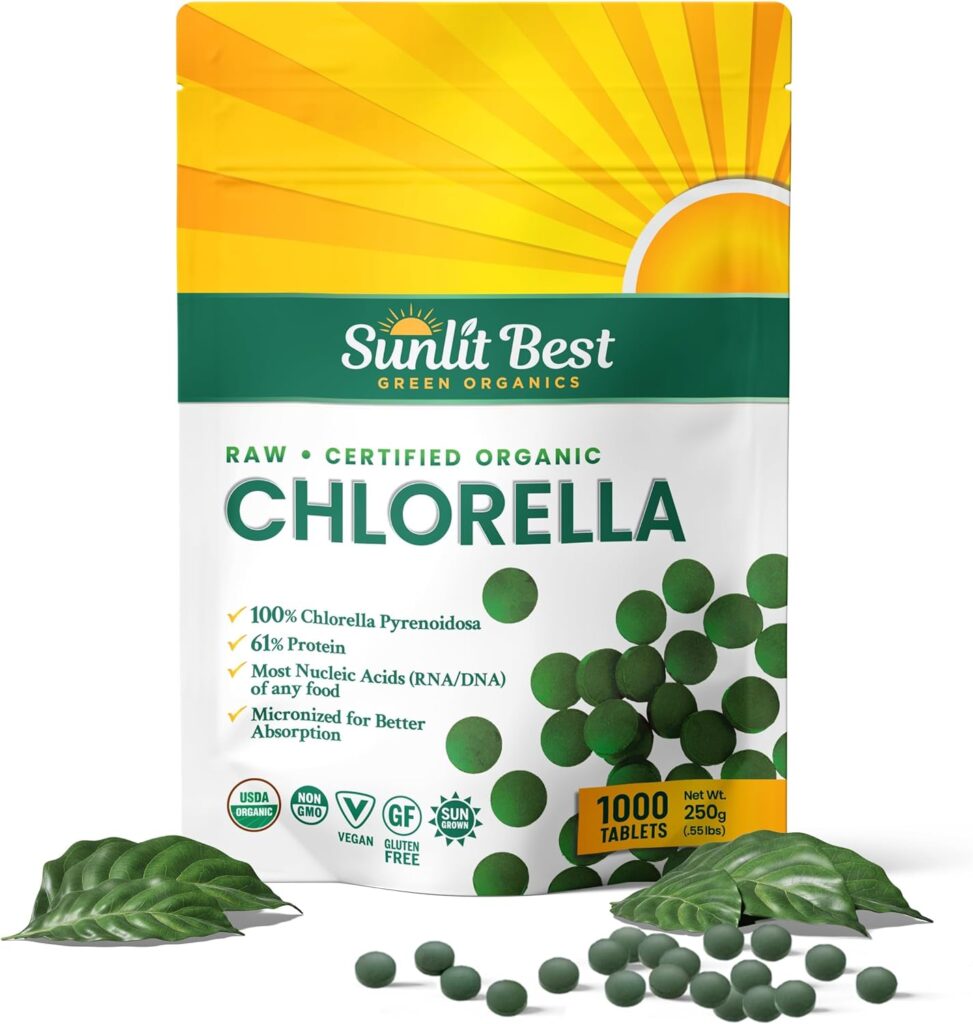What Is Low Iron Anemia?
Low iron anemia is a common blood disorder characterized by a deficiency in red blood cells or hemoglobin, the iron-rich protein that carries oxygen throughout the body.
This can lead to fatigue, weakness, pale skin, shortness of breath, and a host of other frustrating symptoms.
Fortunately, there are several steps you can take to boost your iron levels and support anemia.
5 Ways To Support Low Iron Anemia
1. Supplement with Chlorella
As one of the most concentrated plant-based sources of iron, chlorella makes an excellent first line of defense against low iron anemia.
This nutrient-dense superfood is also rich in vitamins and minerals that support healthy red blood cell production, such as vitamin C, folate, and vitamin B12.
Look for a high-quality chlorella supplement to help replenish depleted iron stores.
My favorite is Sunlit Best’s Chlorella Tablets.
Sunlit Best’s Chlorella Tablets are perfect for obtaining a solid amount of iron, supporting your immune system and providing supercharged energy.
This nutrient-dense superfood is made up of 60% plant protein and amino acids, rich in essential nutrients, including iron, vitamins, and minerals.
With its cracked cell wall technology, Sunlit Best ensures twice the absorbability, making it an efficient and potent choice for those looking to enhance their iron intake naturally.
Simply take a few tabs and you’re good to go!
2. Increase Iron-Rich Foods
Adjusting your diet to include more iron-rich foods is crucial for replenishing depleted stores.
Some top sources include red meat, poultry, seafood, lentils, spinach, cashews, and fortified cereals.
Try pairing iron-rich foods with vitamin C-rich options like citrus fruits, bell peppers, or tomatoes, as this can help improve iron absorption.
3. Avoid Iron Inhibitors
Certain foods and beverages can actually interfere with the body’s ability to absorb iron.
These include coffee, tea, red wine, dairy products, and foods high in calcium or phytates.
Try to consume these items separately from your iron-rich meals.
4. Manage Stress
Chronic stress has been linked to decreased iron levels and worsened anemia symptoms.
Make time for stress-relieving activities like yoga, meditation, or simply getting out in nature.
Maintaining healthy cortisol levels can go a long way in supporting your body’s natural iron balance.
5. Monitor Your Progress
If dietary changes and chlorella supplementation don’t provide the relief you’re seeking, consider working with your healthcare provider to monitor your iron levels and potentially try a targeted iron supplement.
They can help determine the right dosage and formula to address your specific needs.
Support Low Iron Anemia
In summary, the five key tips outlined in this blog provide a comprehensive, holistic approach to addressing low iron anemia.
By focusing on nutrient-dense foods, enhancing iron absorption, managing inflammation, reducing stress, and optimizing gut health, individuals can naturally restore their iron levels and overcome the challenges of this common deficiency.
Implementing these evidence-based strategies can empower readers to take an active role in their health and revitalize their energy, immune function, and overall well-being.
Thank you for reading!
